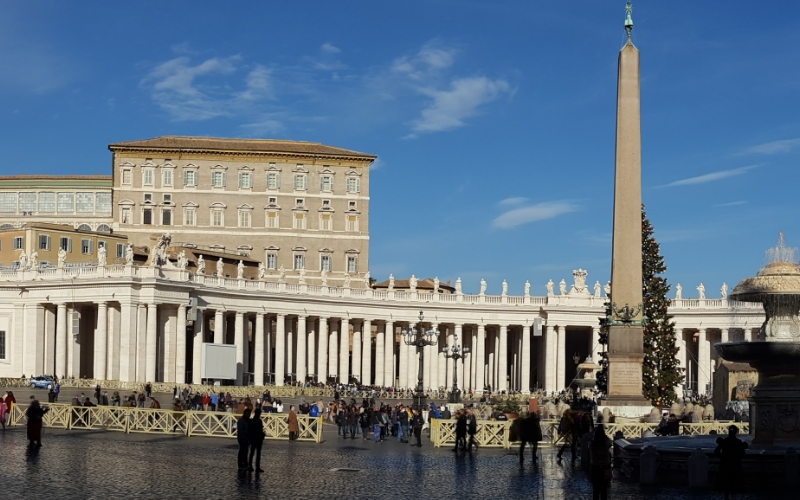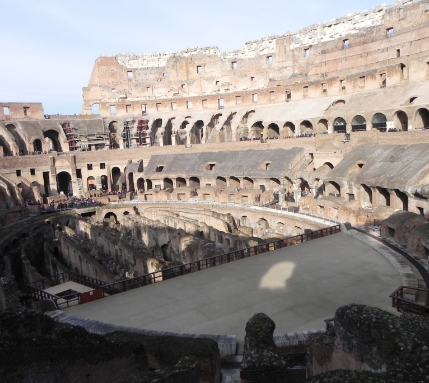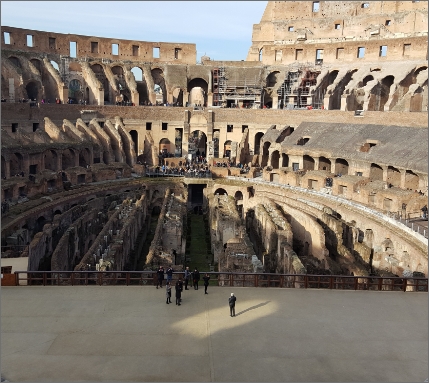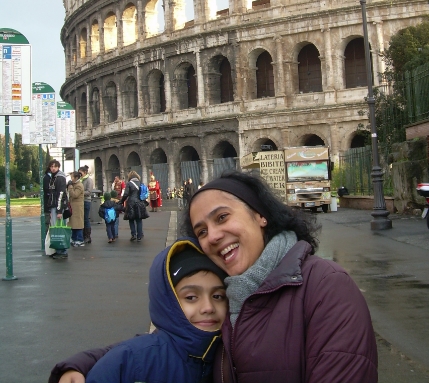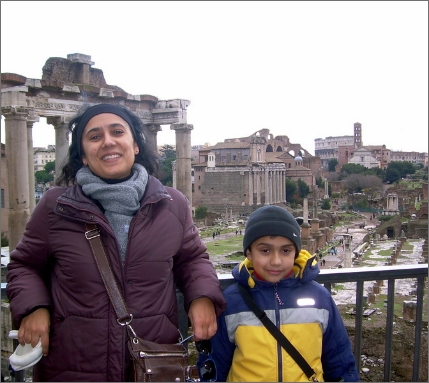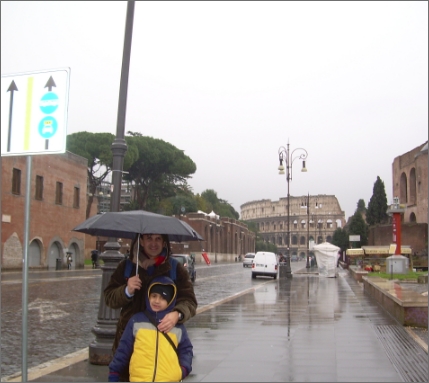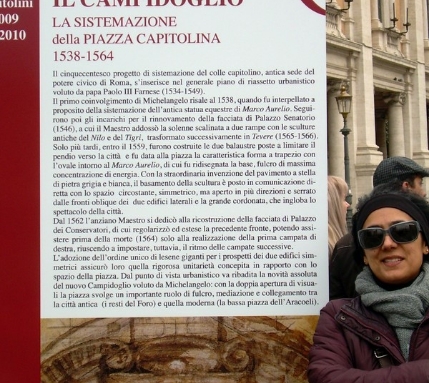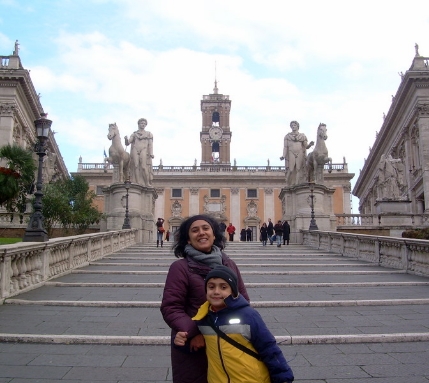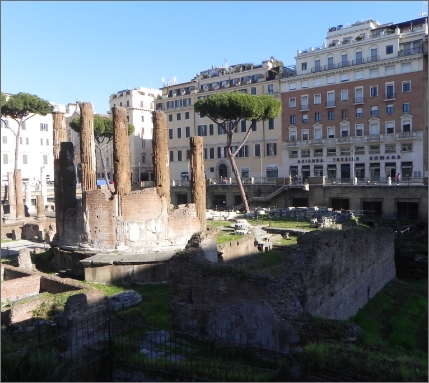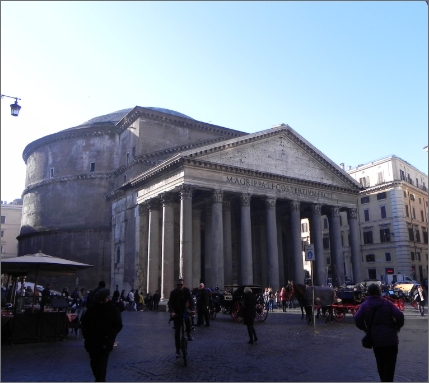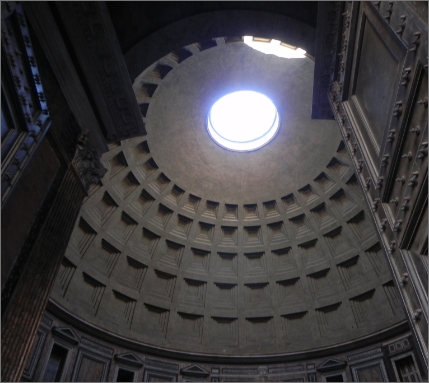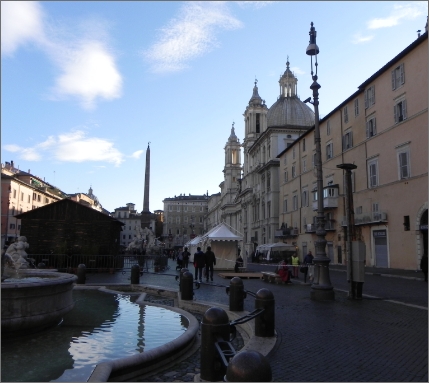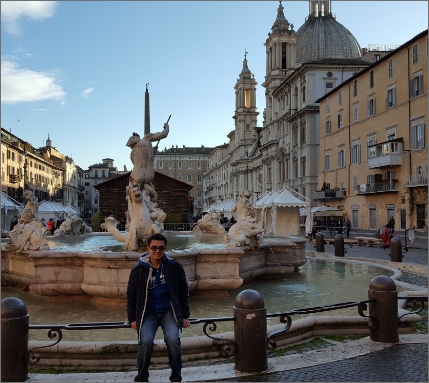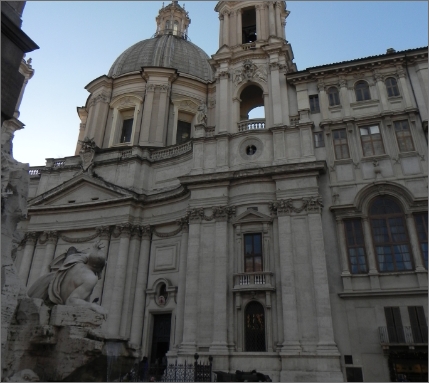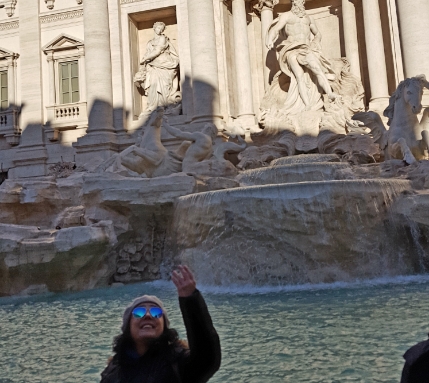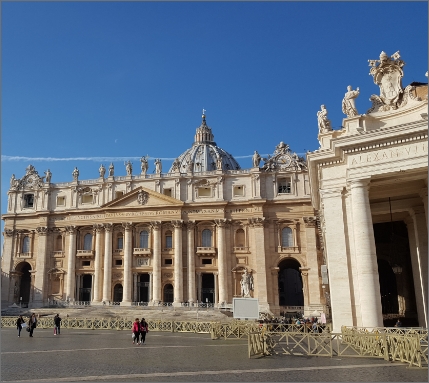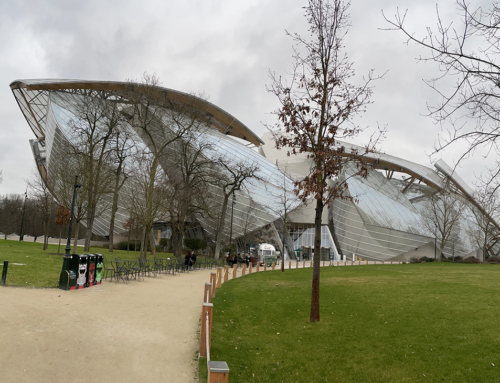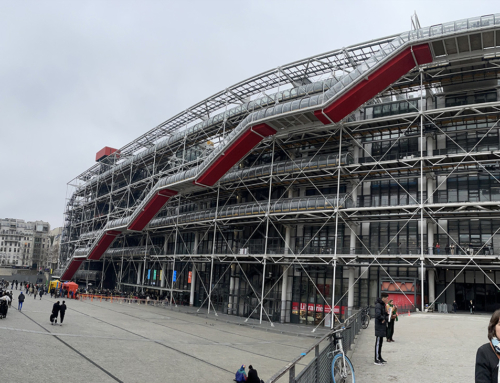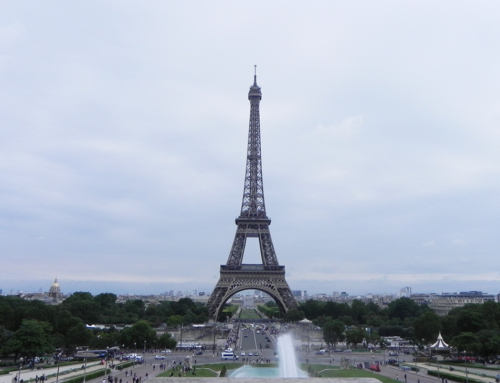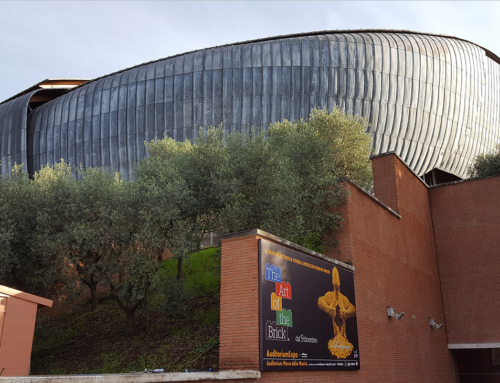
I do not know where I read it, who said it or if I made it up, but I completely agree with this!
I always liked to travel and especially since I had the opportunity to study in Italy, it was the ideal place to reinforce my taste for knowing the world.
I went to study in the eternal city of Rome, the city with the greatest history in the world, where each of its streets and buildings are an open book full of stories to tell. I must say that it was “love at first sight”; from my arrival at the airport “Leonardo da Vinci” following the tour to the dormitory where I would stay; it was an immense emotion to see with my own eyes, live in… Rome. The next day I did a tour of the city; guess, which was the first place, I wanted to see? The Colosseum.(1) The magnificent Colosseum, a colossal oval structure of which stories of great gladiatorial combats, a lavish sample of technology of the Roman Empire. Today is the greatest Icon and tourist attraction of Rome.
Leaving the Colosseum, one can see the imposing Arch of Constantine, which is a triumphal arch characteristic of the Romans and on the other side is the entrance of the “Parco Archeologico,” a mandatory tour to know the greatness of the buildings that were part of ancient Rome: walking among columns, friezes, and ruined walls… it is incredible.
The Via dei Fori Imperiali is lined on either side with the remains of ancient Rome; its course takes it over parts of the Roman, Trajan and Augustus Forum, Temples, and places and many other ruins of old buildings. This famous Via dei Fori Imperiali has a very particular history; in the year 1924 Mussolini decided to widen the ancient road of the Imperial Forums, for the parade even in 1932; for the newly built via, they removed and destroyed over 40.000 square meters of the most densely populated sections of the city. At that moment, the largest archaeological excavation ever made in the city began. Thus, became known these magnificent works of ancient Rome, by accident as almost everything in Rome.
Continuing my tour I return to the Via dei Fori, which runs in a straight line from the Colosseum to Piazza Venezia; very close to that, you can see the Piazza del Campidoglio; this was the sacred hill of ancient Rome where the temple of Jupiter was; in the Middle Ages when the vestiges of the great Roman Empire had disappeared and its temples had been dismantled, it was decided to build on top of the ruins of the pagan temples two palaces, the Palazzo Senatorio and Palazzo dei Conservatori so the hill became the center of government; years later Pope Paul III decided to build a monumental square and chose the greatest and most brilliant artist of the Italian Renaissance, Michelangelo; he found two buildings and decided to build a third one called Palazzo Nuovo to achieve a symmetrical composition and designed an oval space and grand staircase to access it.
The Piazza del Campidoglio (2) is the only one from the Renaissance ages in Rome. I could not resist the temptation to take a picture at the sign that tells the story of this beautiful square, as Michelangelo is one of my favorite architects!
Going down the stairs of Michelangelo, I walked in the direction of Piazza Venezia, at my back I can see the famous altar of the fatherland better known as the “Typewriter” of which I do not want to make any comment; I crossed Piazza Venezia and I had several options to continue my tour, so I decided to walk the most direct route to my next destination, which was via Corso Vittorio Emanuele until I reached via Torre Argentina.
I love walking through this area called Largo di Torre Argentina (an abandoned archaeological site), which lies sunken twenty feet below the new street level and admiring the ruins and the cats (these ruins are known as the largest cat sanctuary in the world).
Entering to Via di Torre Argentina, a narrow road one must make the first stop to appreciate the Piazza Santa Chiara and of course, the Basilica of Santa Maria Sopra Minerva as this church is the only Gothic-style church in Rome, although its facade goes unobserved, so, if you have time I advise you to visit this beautiful church it is worth to do it … the basilica is located just one block from the Pantheon. (1)
Speaking about the Pantheon, it is incredible, but this building is one of the best-preserved monuments of ancient Rome. This was the first pagan temple to be converted into a Christian church and this allowed it to be in permanent use. When it was transformed into a Christian church, it was given the name of Basilica of Santa Maria and the Martyrs. This is a circular building with a portico of large Corinthian columns with a dome with an opening (oculus) of 9 meters in diameter that lets the sunlight into the building, but not the rain … built two thousand years ago are a true example of Roman architecture, perfect balance and harmony of its forms and its dome is still the largest in the world built with unreinforced concrete.
So far, I have been making a tour of the monuments near this area, however as you know, Rome is the city with the largest number of monuments in the world, as such is impossible to go see it all in one visit, so the best option for me is divided by sectors; in this case, I’m leaving the Pantheon following the Via de S. Eustachio without deviating, to reach one of the most important squares of Rome: Piazza Navona. The Piazza Navona (2) owes its elongated shape to the stadium of Domitian on whose ruins were built in the Middle Ages as you see this is the history of Rome! …. In the year 1655 Pope Innocent X who had in that square a palace owned by his family (now the Embassy of Brazil) wanted to turn the square into the most spectacular of the city; this is how this Baroque square has two important monuments that deserve to be seen, the Fountain of the Rivers designed by Gian Lorenzo Bernini and the Church of Sant’ Agnese in Agome designed by Francesco Borromini the two great rivals at the time of architecture and art. The Piazza is always full of street artists selling their works of art and making portraits to tourists.
Another landmark that can be seen in every movie filmed in Rome is the Trevi Fountain (2); it is the most monumental fountain in Rome and in the world. The name derives from the Latin “Trivium” which means ‘three streets’ for this reason Trevi Fountain translates as “three streets fountain” which clearly explains the location of the fountain at the junction of three roads. The first Trevi Fountain was designed by Leon Battista Alberti in 1453 at the final point of the old Aqua Virgo aqueduct and for more than a century this fountain offered the only supply of pure water in Rome; in 1629 Bernini was commissioned by the Pope Urban VIII to build a new Trevi Fountain and he pulled down the old fountain and moved the outlet of the aqueduct to its present position but the project was abandoned upon the death of pope Urban; in the next century pope clement XII created a contest and the winner was an unknown architect named Nicola Salvi who became famous after this work. The project was finished in 1732 (took more than 30 years). One of its main characteristics is the monumentality scale in relation to the small piazza where it is located. You must visit this beautiful fountain because if you do not throw a coin into it, you will not be able to return to the eternal city!
Here I am going to pause because I cannot stop talking about Rome, so I will continue this tour in the second part from this same site.
After touring what we could say these important and famous monuments, it is time to ask … what is next? Where am I going to?
I have tried to make a chronological tour, starting from the monuments of the Roman period, and continuing with those built in the Middle Ages and the Renaissance. So, I am going to another part of the city to visit the Rome center of the Catholic Church. Rome is also called the city of churches as it has more than nine hundred churches, of which four are known as Major Basilicas. It is obvious that had to visit now the Basilicas, I suggest you visit the first one St. Peter’s Basilica.(3)
St. Peter’s Basilica is considered the largest church in the world (the facade is 114.69 meters wide and 136 meters high from its dome); its history marks the official beginning of the Catholic religion when Emperor Constantine the Great converted to Christianity and ordered to build this first basilica in the place where St. Peter was crucified, this one was completed in the year 349AD. This one was replaced by the current basilica during the Renaissance of the city; its construction took more than a century it was completed in 1626 and during its construction, multiple Masters of Architecture and art in Italy collaborated among others Bramante, Raphael, Michelangelo, and Bernini.
St. Peter Piazza it is another topic I must talk about, I only tell you that it is one of my favorites. During the years I lived in Rome I never got tired of visiting this basilica and every time I have returned to visit Rome I continue to do so, feeling the same emotion and admiration to visit it again as if it is the first time.
I will talk some more about Rome in the next blog, but for now, I will stop here; this first writing is from Rome the city where I came to study and live. It is a beautiful place with plenty of architectural icons, legends, and secrets.
Arrivederci Roma!
Notes: 1. UNESCO World Heritage Sites (I visited). 2. Piazzas in Rome. 3. The St Peter Cathedral in Rome

